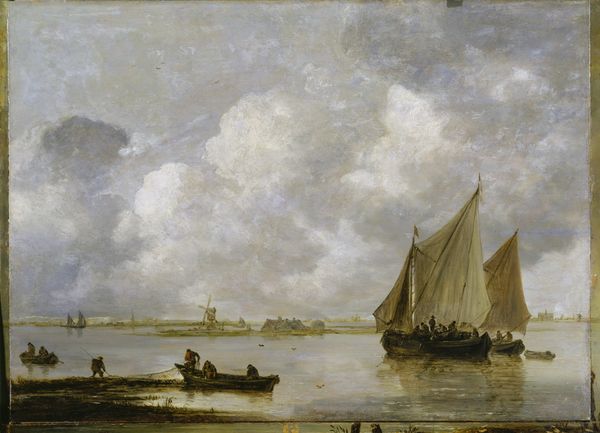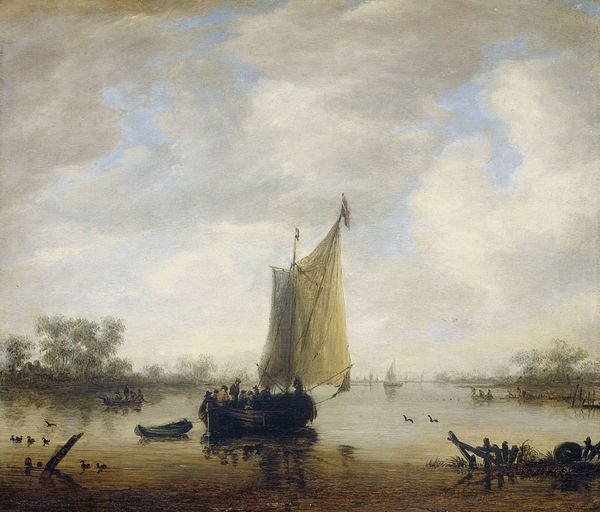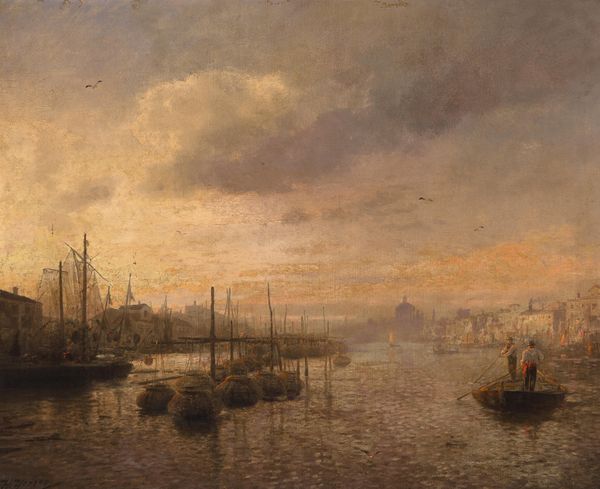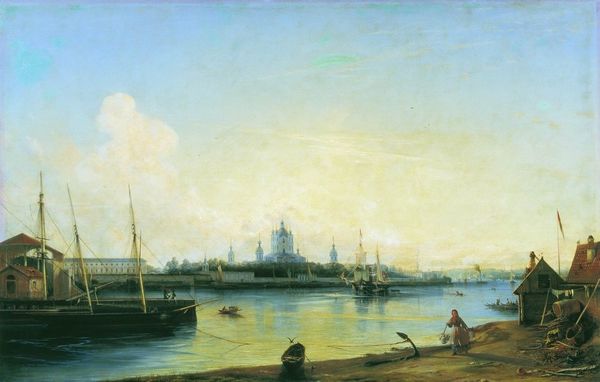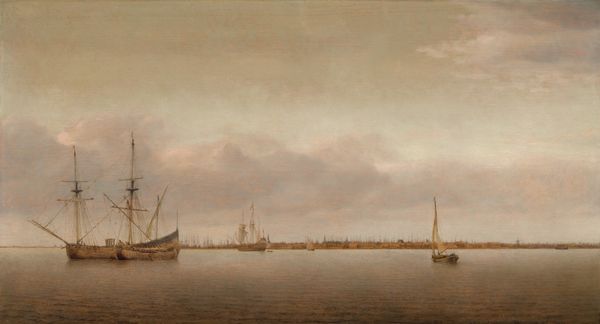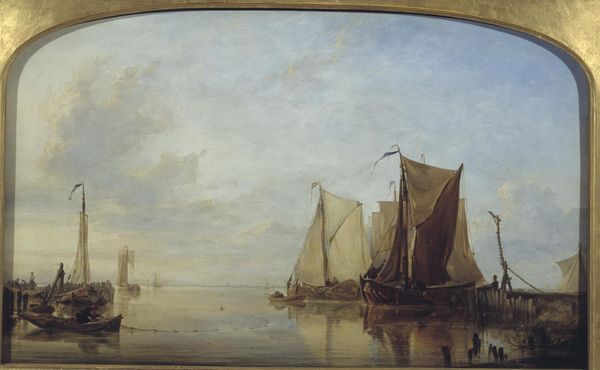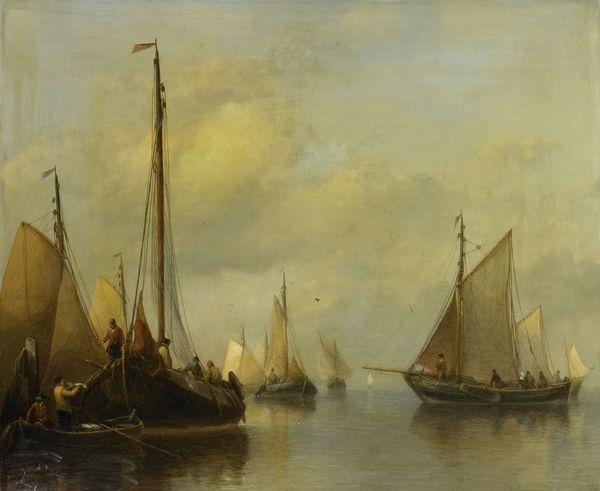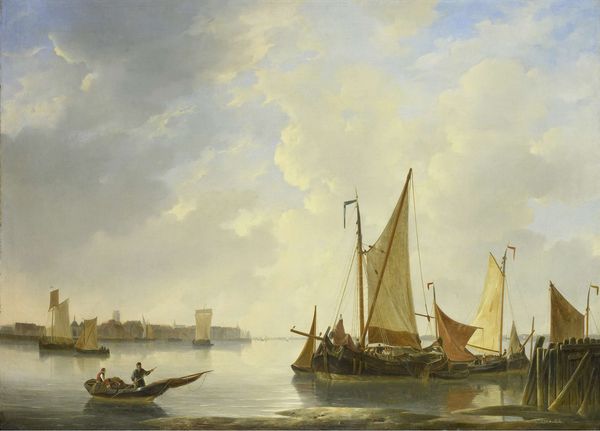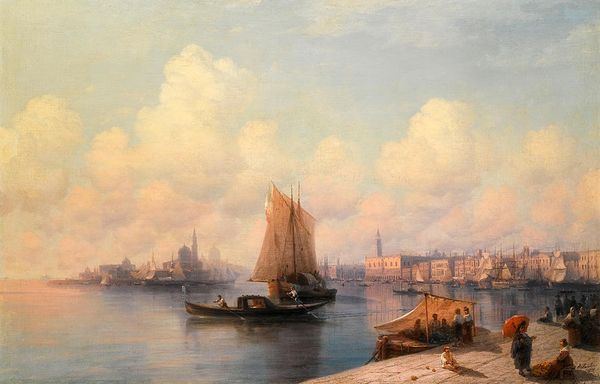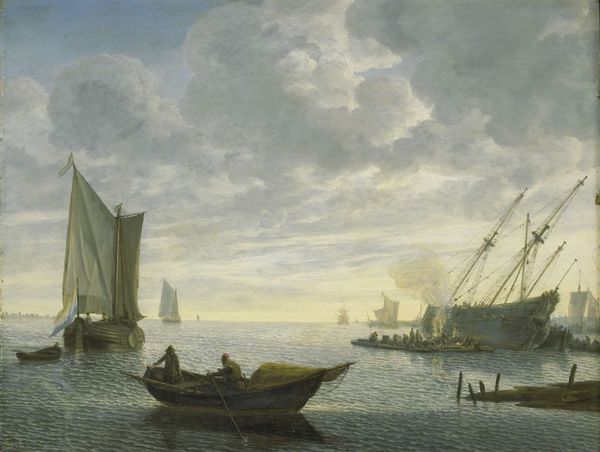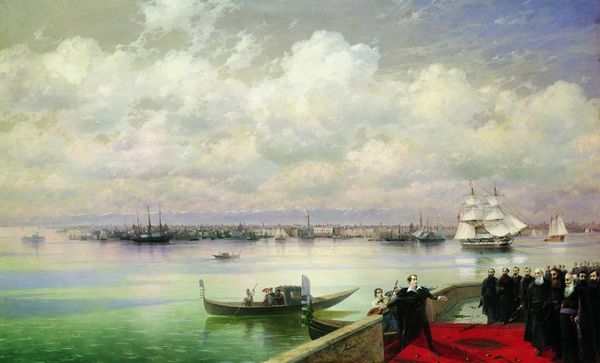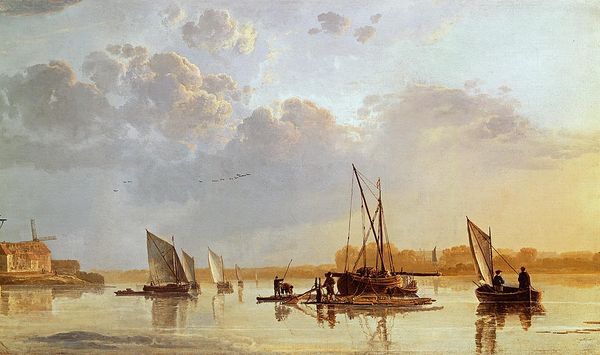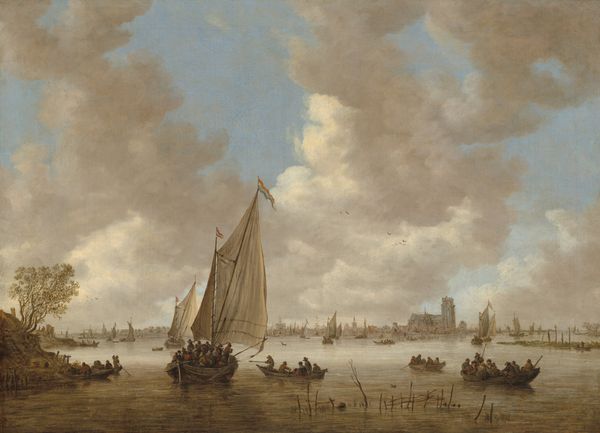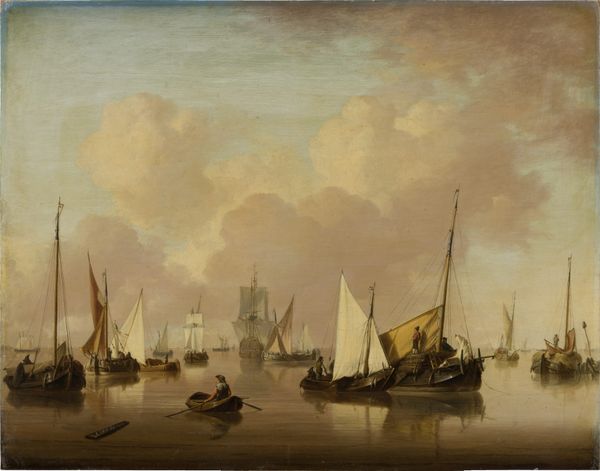
Dimensions: 94 x 138 cm
Copyright: Public domain
Curator: Here we have Ivan Konstantinovich Aivazovsky's 1853 oil on canvas, "Arrival of Peter I on the Neva." Editor: It strikes me as an odd mix of grand and almost… folksy. The sky is expansive, and then we have what looks like a rather makeshift landing. Curator: That’s a keen observation. Aivazovsky, while celebrated for his seascapes, presents us with more than just naval prowess here. Think about the raft, seemingly cobbled together. This hints at the immediate needs of a leader pushing progress—making do with available materials to establish a foothold. It embodies practical, if somewhat crude, ingenuity. Editor: So, you’re seeing the raft less as incidental and more as a signifier of labor and nascent infrastructure? Curator: Precisely! Consider Peter's ambitions for shipbuilding and naval dominance, heavily reliant on available local timber. Every tree felled, every plank laid—they fed into the broader historical and industrial narrative. It’s about re-evaluating historical paintings with a sharper understanding of material culture. What are your iconographical impressions, though? I am quite interested to know. Editor: Peter, as the returning Tsar, standing tall above everyone else. We also get what might read as a near halo effect from that pure white cloth draped behind him; and don't overlook that lone figure, far off on the bank to the right, seemingly in supplication. What meanings does the artist wish for us to interpret? He becomes a symbol of inevitable and almost holy progress. The other figures on the barge seem in various attitudes of reverence too. Curator: Ah, yes, the divine aura implied. Still, those robes, the details of Peter’s jacket—I wonder about the workshops or suppliers he would use. Those materials would have social implications; questions of trade and manufacture all become crucial in deciphering the painting. Editor: So for you it is important to also look into the clothing materials themselves; a question not only of aesthetics but origins too? How fascinating! Considering it through both your eyes and mine gives us such a richer understanding. Curator: Indeed! Examining artworks with multiple perspectives like these unearths new historical meanings. Editor: An excellent lens through which to understand historical change.
Comments
No comments
Be the first to comment and join the conversation on the ultimate creative platform.
